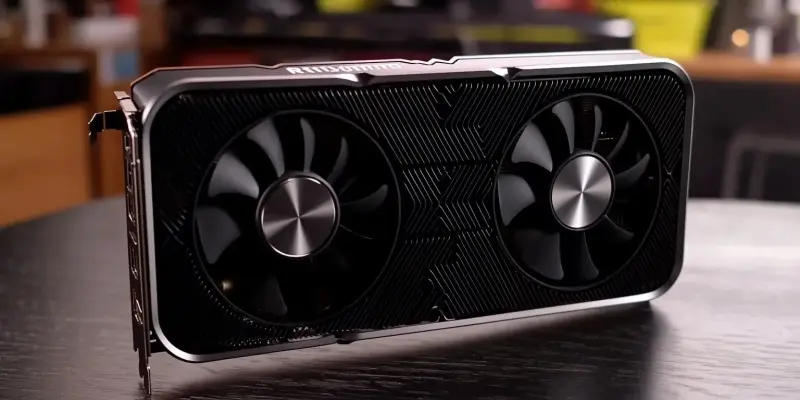NVIDIA has once again captured the tech world’s attention with the announcement of its latest graphics powerhouse, the GeForce RTX 5090. Boasting significant performance gains over its predecessor, the RTX 4090, the early benchmarks conducted using Geekbench’s OpenCL and Vulkan APIs reveal substantial improvements that could shift the GPU landscape. These benchmarks indicate that the RTX 5090 performs up to 37% faster in Vulkan API tests and 16% faster in OpenCL tests compared to the previous generation, positioning it as a formidable upgrade for both gamers and professionals. Such advancements suggest a substantial leap that not only boosts raw performance but also enhances efficiency and computational power, making it a highly anticipated release in the GPU market.
Performance Improvements and Benchmarks
A closer look at the test results underscores how the RTX 5090 is a significant advancement in NVIDIA’s lineup. With a focus on the Vulkan API, the new GPU exhibits a remarkable 37% performance boost, highlighting its potential for applications leveraging this API. This is particularly vital for game developers and professionals working in rendering and simulation fields where Vulkan’s low-overhead capabilities are crucial. Additionally, the 16% performance increase in OpenCL tests showcases the card’s versatility and robust compute performance, essential for a wide array of workloads that rely on parallel processing power.
The RTX 5090’s substantial performance improvements can be attributed to several key technical advancements. Notably, the incorporation of DLSS 4 technology with Multi-Frame Generation support promises to double the performance in scenarios optimized for DLSS compared to the RTX 4090. DLSS 4’s ability to generate multiple frames simultaneously significantly enhances frame rates and image quality, creating a smoother and more immersive experience, especially in graphically intensive applications and gaming environments. Beyond DLSS 4, the addition of 32 GB of next-generation GDDR7 memory and a 512-bit memory bus marks a substantial upgrade aimed at enhancing data transfer rates and overall computational bandwidth, directly impacting the GPU’s efficiency and performance in demanding tasks.
Technical Advancements and Power Requirements
To truly grasp the RTX 5090’s potential, consideration must be given to the impressive technical specifications that underpin its performance. The GPU is set to be the flagship model in NVIDIA’s new Blackwell lineup, featuring an unprecedented 21,760 GPU cores. This significant increase in core count outshines the RTX 4090, paving the way for superior multitasking capabilities and faster processing speeds across various applications. The base clock speed of 2.41 GHz further corroborates the card’s ability to execute tasks swiftly, providing a tangible edge in both gaming and professional environments where every millisecond counts.
However, such powerful performance isn’t without its trade-offs. The RTX 5090 comes with a higher power consumption, rated at 575 watts, necessitating an efficient and robust power supply. This increase also means that users will need to ensure their systems are equipped to handle the additional energy demands. The GPU’s shift to the newer 12V-2×6 (16-Pin) power interface is indicative of NVIDIA’s forward-thinking approach, aiming to facilitate better power management and supply stability. While the power requirements might be a consideration for some users, the performance gains and technological advancements offer a compelling justification for the transition.
Market Prospects and Pricing
From a market perspective, the introduction of the RTX 5090 is poised to make waves, albeit with a notable price increase. The GPU is set to launch with an MSRP of $1999, reflecting a $400 rise from the RTX 4090’s starting price. This price point positions the RTX 5090 as a premium product aimed at enthusiasts and professionals who demand top-tier performance and are willing to invest accordingly. The availability of various custom models from AIB partners alongside NVIDIA’s Founders Edition offers consumers multiple options to suit their preferences and needs. The Founders Edition’s refined dual-slot and dual-fan design not only improves cooling efficiency but also retains a sleek, premium aesthetic.
In assessing the practical benefits of the RTX 5090, it’s clear that it represents more than just a marginal upgrade; it signifies a leap forward in NVIDIA’s dedication to pushing the boundaries of GPU technology. The card’s performance improvements, bolstered by features like DLSS 4 and the substantial memory upgrade, cater to a future where gaming, professional graphics, and AI are more demanding than ever. Despite the higher cost and increased power requirements, the RTX 5090’s specifications and early benchmark performances paint a promising picture for its impact on the market.
Conclusion
NVIDIA has once again grabbed the spotlight in the tech community with its announcement of the latest graphics behemoth, the GeForce RTX 5090. With notable performance enhancements over its predecessor, the RTX 4090, the initial benchmarks carried out using Geekbench’s OpenCL and Vulkan APIs reveal remarkable improvements that could revolutionize the GPU landscape. According to these benchmarks, the RTX 5090 is up to 37% faster in Vulkan API tests and 16% faster in OpenCL tests compared to the previous generation. This positions it as a significant upgrade for both gamers and professionals alike. These advancements signify not only a substantial boost in raw performance but also enhancements in efficiency and computational power, establishing it as a much-anticipated release in the GPU market. The RTX 5090’s superior capabilities promise to deliver unprecedented experiences in gaming, rendering, and complex computational tasks, catering to a demand for highly efficient and powerful graphic solutions.

